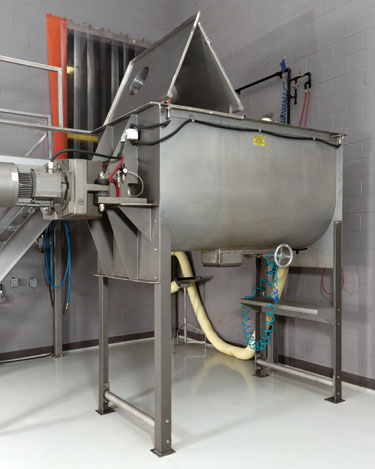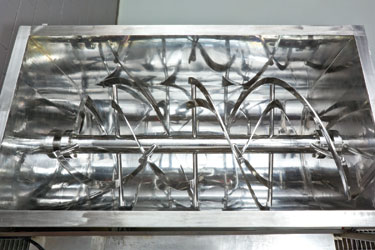Munson horizontal ribbon blender Model HD-3-1/2-7-SS blends materials of widely varying bulk densities. The blender occupies its own sanitary room to minimize cross contamination and comply with GMP, HACCP and other standards.
Blended product discharges into customer's final package.
For sanitary operation, all product contact surfaces of the blender are constructed of stainless steel. Split double helical agitator subjects every particle of material to agitation.
Inventory includes drums, boxes, bags of incoming raw materials, and finished, blended products for shipment to customers.




